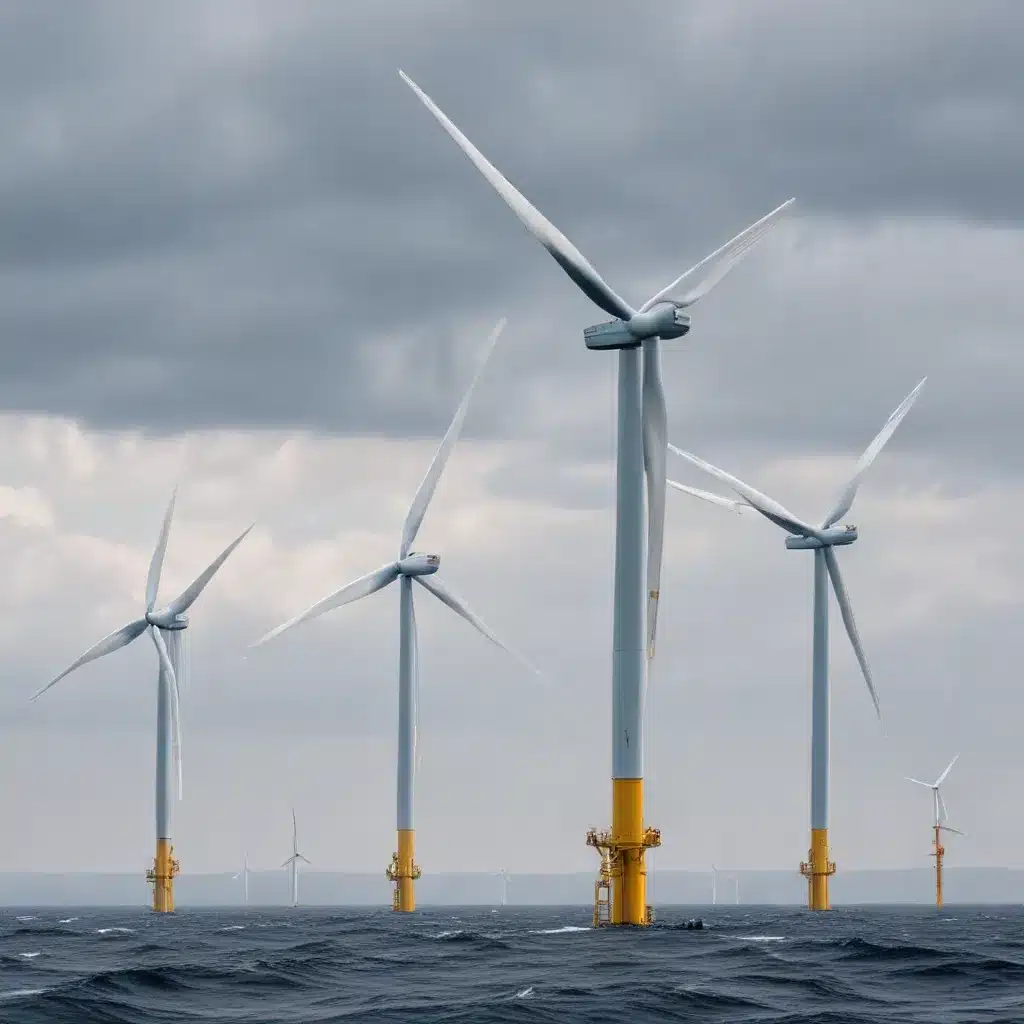
As Europe grapples with the escalating urgency of the climate crisis, the pivotal role of renewable energy has never been more apparent. At the forefront of this green energy revolution is the remarkable growth of offshore wind technology—a clean, reliable, and increasingly cost-effective solution that is reshaping Europe’s energy landscape.
The Offshore Wind Ecosystem in Europe
The Surging Demand for Renewable Energy
Across the continent, governments and policymakers have set ambitious targets to rapidly decarbonize their economies and transition towards a sustainable energy future. The European Union’s 2030 Climate Target Plan aims to reduce greenhouse gas emissions by at least 55% by 2030, with a long-term goal of achieving net-zero emissions by 2050. This unwavering commitment has fueled a surge in renewable energy development, with offshore wind emerging as a key pillar of Europe’s clean energy strategy.
Technological Innovations in Offshore Wind
Advancements in offshore wind technology have been a driving force behind the sector’s remarkable growth. The development of floating offshore wind turbines, for instance, has expanded the viable sea area for wind farm installations by a factor of five, allowing for the harnessing of stronger winds in deeper waters. Additionally, the continued increase in turbine size and capacity—with the latest models exceeding 15 megawatts (MW)—has significantly enhanced the efficiency and cost-competitiveness of offshore wind power.
Innovations in hydrogen electrolysis further amplify the potential of offshore wind. Excess wind energy can now be used to power electrolyzers, producing green hydrogen that can be stored and deployed as a versatile fuel or energy carrier, unlocking new avenues for decarbonizing hard-to-abate sectors.
Regulatory Frameworks and Policies
Underpinning the expansion of offshore wind in Europe is a suite of supportive policies and regulatory frameworks. Governments across the continent have implemented measures such as feed-in tariffs, power purchase agreements, and ambitious capacity targets to create a favorable environment for investment and spur the growth of this vital renewable energy source.
The European Offshore Wind Market
Industry Leaders and Key Players
The European offshore wind market is populated by a diverse array of industry leaders, including global turbine manufacturers, project developers, construction firms, and service providers. Established players, such as Vestas, Siemens Gamesa, and Ørsted, have played a pivotal role in driving technological advancements and cost reductions, while newer entrants, including oil majors and utilities, are increasingly seeking to capitalize on the sector’s growth potential.
Emerging Offshore Wind Hubs
While the United Kingdom has long been a dominant force in European offshore wind, with over 10 gigawatts (GW) of installed capacity, other regions are rapidly emerging as attractive hubs for this renewable energy revolution. Countries like Germany, the Netherlands, and Denmark have also made significant strides, collectively accounting for the majority of Europe’s offshore wind installations.
Future Growth Projections
The future trajectory of offshore wind in Europe is exceedingly promising. According to industry estimates, global installed offshore wind capacity is expected to reach an astounding 630 GW by 2050, up from just 40 GW in 2020. This exponential growth underscores the immense potential of offshore wind as a reliable and sustainable source of electricity generation that will be crucial in achieving Europe’s ambitious climate goals.
Environmental Considerations
Mitigating Ecological Impacts
As the offshore wind industry expands, careful environmental stewardship is paramount. Developers and policymakers must navigate a complex web of regulations and guidelines to minimize the impact on marine ecosystems, ensuring the responsible deployment of wind farms without compromising the delicate balance of coastal habitats.
Offshore Wind and Coastal Communities
The growth of offshore wind also presents both opportunities and challenges for coastal communities. While the industry can generate significant economic activity and create new “green” job opportunities, it is crucial to address local concerns and engage with stakeholders to ensure a just and inclusive transition that benefits all.
Challenges and Barriers
Infrastructure Constraints
Despite the remarkable progress in offshore wind technology, challenges remain. Developing the necessary grid infrastructure to transmit and integrate the surge of renewable electricity generated by offshore wind farms is a formidable task that requires substantial investment and coordination between policymakers, system operators, and industry players.
Grid Integration and Energy Storage
Ensuring the reliable and efficient integration of offshore wind power into national and regional grids is another key challenge. Advancements in energy storage technologies, such as batteries and hydrogen storage, will be essential in addressing the intermittent nature of wind power and enabling the seamless integration of offshore wind into the broader energy system.
Financing and Investment Hurdles
The capital-intensive nature of offshore wind projects also poses a significant barrier, requiring substantial upfront investments and robust financing mechanisms. Policymakers and industry stakeholders must work together to develop innovative financing solutions, leveraging public-private partnerships and green investment schemes, to unlock the necessary capital to drive the continued expansion of this vital renewable energy source.
As Europe navigates the energy transition, the offshore wind sector has emerged as a shining beacon of progress, harnessing the vast, untapped potential of the winds that sweep across the continent’s coastlines. By embracing technological innovations, fostering collaborative ecosystems, and addressing the various challenges that lie ahead, Europe is poised to harness the winds of progress and cement its position as a global leader in the renewable energy revolution. The future of offshore wind in Europe is brimming with promise, and the path towards a sustainable, carbon-neutral future has never been clearer.






